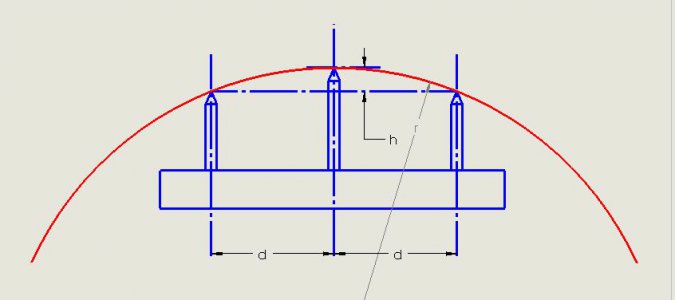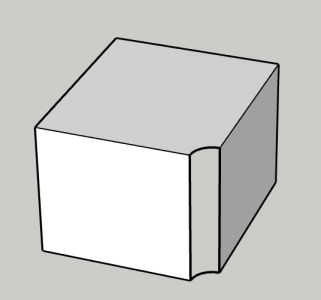-
Welcome back Guest! Did you know you can mentor other members here at H-M? If not, please check out our Relaunch of Hobby Machinist Mentoring Program!
You are using an out of date browser. It may not display this or other websites correctly.
You should upgrade or use an alternative browser.
You should upgrade or use an alternative browser.
Measuring radii
- Thread starter DavidR8
- Start date
- Joined
- Oct 16, 2019
- Messages
- 6,580
Try matching different diameter stock from the scrap bin until you find a close fit.
Good idea. Drill bits come to mind.
- Joined
- Feb 1, 2015
- Messages
- 9,621
If the radius were a full quarter circle, I wold measure the length of an adjacent face and the distance between the to perpendicular faces, the difference being the radius. If it is not a full quarter circle, I would turn a diameter on a cylinder to match and measure the diameter of the cylinder.
- Joined
- Oct 16, 2019
- Messages
- 6,580
If the radius were a full quarter circle, I wold measure the length of an adjacent face and the distance between the to perpendicular faces, the difference being the radius. If it is not a full quarter circle, I would turn a diameter on a cylinder to match and measure the diameter of the cylinder.
Brilliant!
Thank you

- Joined
- Jun 7, 2013
- Messages
- 10,101
Perhaps you need to invest in a set of gages! You should know by now, how much we like to spend each other's money ---
- Joined
- Feb 1, 2015
- Messages
- 9,621
For a quick and dirty, I do what nut farmer suggested. I try fitting various pins, washers, etc. and measure the closest fit.
For larger radii, I made a version of a tool called a lens clock or a Geneva lens gauge used by lens makers. Basically, three points , the two outer ones fixed and the center one adjustable with known separations in a bar. When all three points touch the circle the distance between the two outer points lie on the chord of the circle and the radius can be determined using trigonometry. The math is a bit hairy and an easier way to determine the radius is to draw out the observed condition in a CAD program and let the math engine in the program solve for the radius.
This tool can be used for both concave and convex radii. This is a particularly useful method for very large radii. I used it to verify the radius of spherical mirrors that I made which had a radius of 7.5".
For larger radii, I made a version of a tool called a lens clock or a Geneva lens gauge used by lens makers. Basically, three points , the two outer ones fixed and the center one adjustable with known separations in a bar. When all three points touch the circle the distance between the two outer points lie on the chord of the circle and the radius can be determined using trigonometry. The math is a bit hairy and an easier way to determine the radius is to draw out the observed condition in a CAD program and let the math engine in the program solve for the radius.
This tool can be used for both concave and convex radii. This is a particularly useful method for very large radii. I used it to verify the radius of spherical mirrors that I made which had a radius of 7.5".

Last edited:
- Joined
- Feb 1, 2015
- Messages
- 9,621
Actually, using geometry, the equation for the radius is r = (d^2 + h^2)/2h. Sometimes the simplest way is the easiest way.
- Joined
- Oct 16, 2019
- Messages
- 6,580
That math right?Actually, using geometry, the equation for the radius is r = (d^2 + h^2)/2h. Sometimes the simplest way is the easiest way.

- Joined
- Jan 31, 2016
- Messages
- 11,471
And there you have it .Perhaps you need to invest in a set of gages! You should know by now, how much we like to spend each other's money ---


